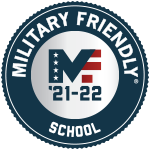
All members of the College Community; students, staff, and faculty, are expected to wear face mask or coverings while on campus. Additionally, all visitors to campus are expected to comply.
Face masks/coverings
All members of the College Community; students, staff, and faculty, are expected to wear face mask or coverings while on campus. Additionally, all visitors to campus are expected to comply. In accordance with the Commonwealth’s safety order issued on July 1, 2020, face masks/coverings (e.g., disposable masks or cloth face coverings) must be properly worn by all employees working on and off campus at all times in public settings (e.g., common workspaces, public spaces, hallways, stairwells, elevators, meeting rooms, classrooms, break-rooms, campus outdoor spaces, restrooms, etc.).
-
Faculty members teaching in a classroom have the choice of utilizing a plastic face shield, or in combination with the use of a face mask/covering, recognizing that the CDC does not recommend the use of face shields as a substitute for a face mask. However, the July 2020 Commonwealth order regarding the mandatory wearing of face masks in public also recognizes face shields to be in compliance.
-
If physical distancing is possible, employees working alone in private offices or laboratory environments and who are not otherwise engaged with any other employee, may remove their face masks/coverings while in such space. Appropriate use of face masks/coverings is important in minimizing risks to the wearers and those around them. COVID-19 can be spread to other employees even if an employee is asymptomatic and/or does not feel sick.
-
The face mask/covering is not a substitute for physical distancing.
Use and care of Face Masks/Coverings
-
Putting on the face mask/covering
-
Wash hands or use hand sanitizer prior to handling the face mask/covering.
-
Ensure the face mask/covering fits over the nose and under the chin.
-
Situate the face mask/covering properly with nose wire snug against the nose (when applicable).
-
Tie straps behind the head and neck or loop around the ears.
-
Throughout the process: Avoid touching the front of the face mask/covering.
Taking off the face mask/covering
-
Do not touch your eyes, nose, or mouth when removing the face mask/covering.
-
When taking off the face mask/covering, loop your finger into the strap and pull the strap away from the ear, or untie the straps.
-
Wash hands immediately after removing.
Care, storage and laundering of cloth face coverings
-
Keep face covering stored in a paper bag when not in use.
-
Cloth face coverings may not be used longer than one day at a time and must be washed after use.
-
Disinfecting method: Launder cloth face coverings with regular laundry detergent before first use and at the end of the work day.
Disposal of face masks
-
Keep face mask stored in a paper bag when not in use.
-
Disposable face masks must not be used for more than one day and should be placed in a trash receptacle.
-
Dispose of a face mask if it is visibly damaged (e.g., stretched ear loops, torn or punctured materials), dirty or visibly contaminated.
Gloves
Gloves are not necessary for general use and should not replace good hand hygiene. Washing your hands often with soap and hot water for a minimum of 20 seconds is considered the best practice for common everyday tasks. However, employees may elect to wear gloves while working on campus.
Hand-washing
Wash your hands often with soap and hot water for a minimum of 20 seconds especially after you have been in a public place or used the restroom; after blowing your nose, coughing or sneezing; and before and after eating. If soap and water are not readily available, use a hand sanitizer that contains at least 60% alcohol, which must be allowed to dry to be effective. Cover all surfaces of your hands and hold them together until they feel dry. Avoid touching your eyes, nose and mouth with unwashed hands.
Coughing/Sneezing Hygiene
If you are in a private setting and not wearing your face mask/covering, remember to always cover your mouth and nose with a tissue when you cough or sneeze or use the inside of your elbow. Throw used tissues in the trash. Immediately wash your hands with soap and hot water for a minimum of 20 seconds. If soap and hot water are not readily available, clean your hands with a hand sanitizer that contains at least 60% alcohol.
Using Restrooms
Restrooms usage must ensure physical distancing is achieved at all times. All employees must observe the posted occupancy signage when a restroom is occupied.
Using Elevators
Elevator usage must ensure physical distancing is achieved. Using stairs whenever possible will assist vertical circulation given that elevator capacities may be challenged. If using the elevator, wear a face mask/covering and wash hands with soap and hot water for a minimum of 20 seconds or use hand sanitizer with 60% alcohol upon departing the elevator. Custodial crews will be wiping down elevator buttons more frequently during the day.





